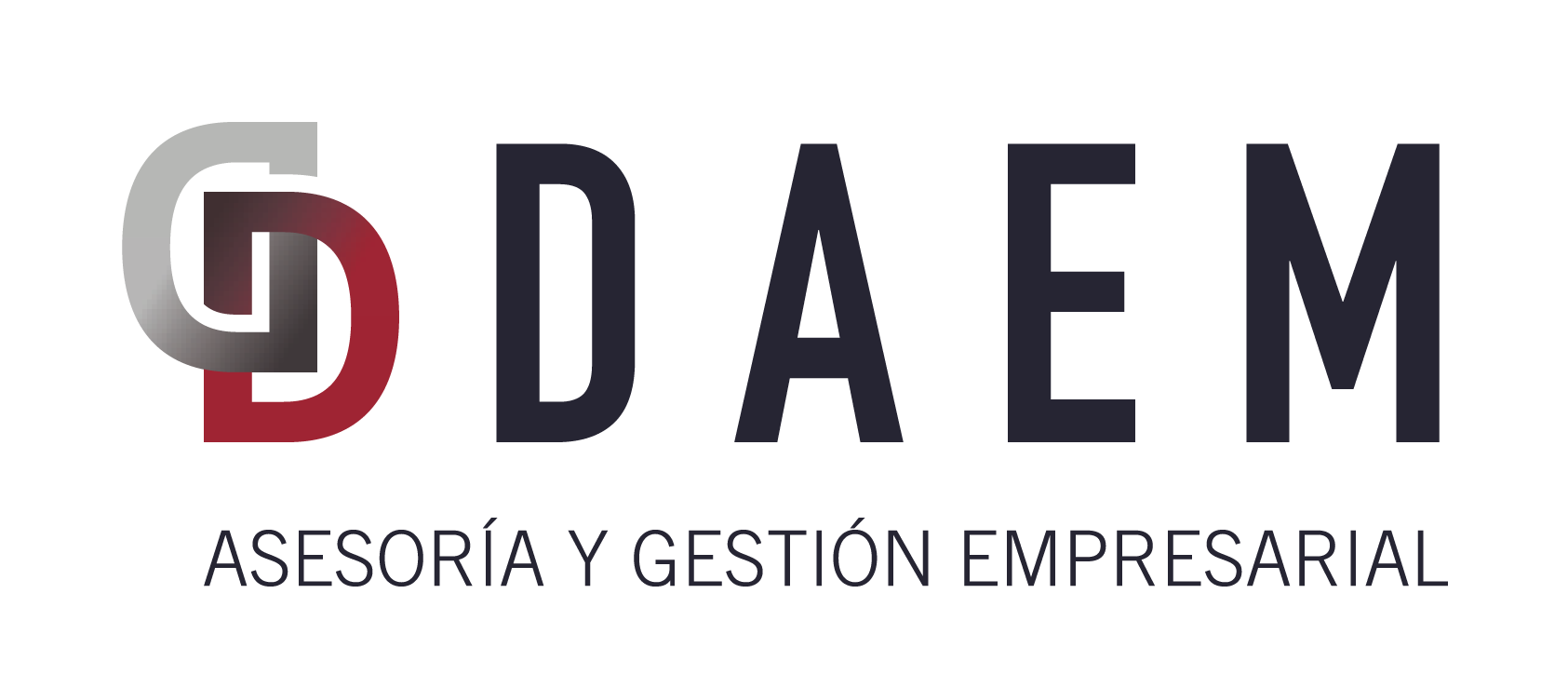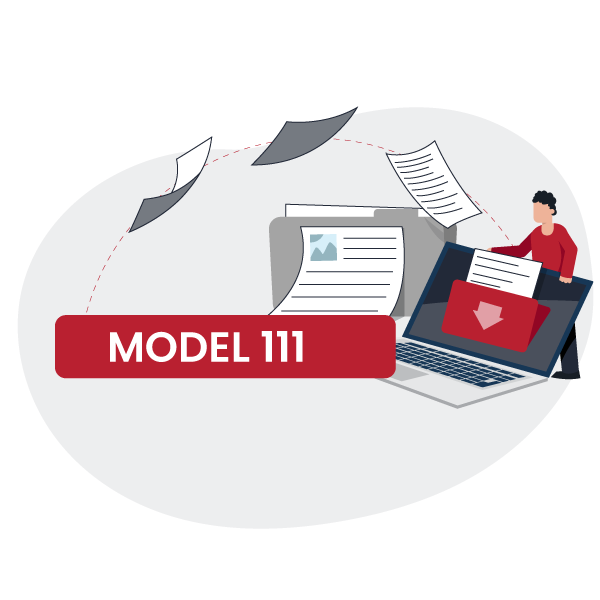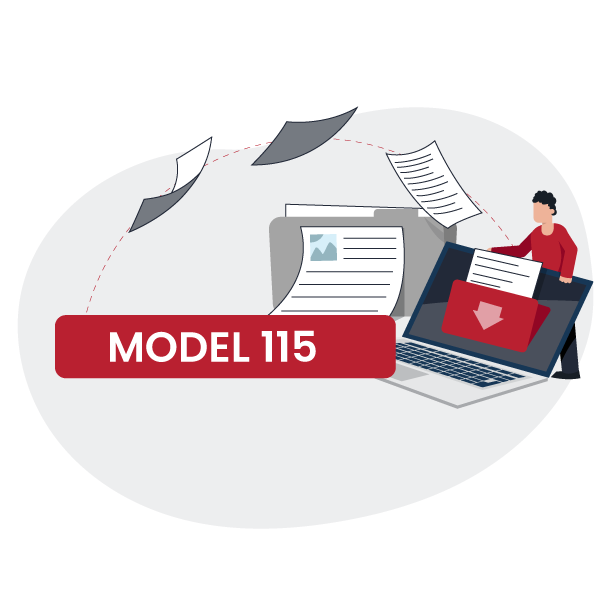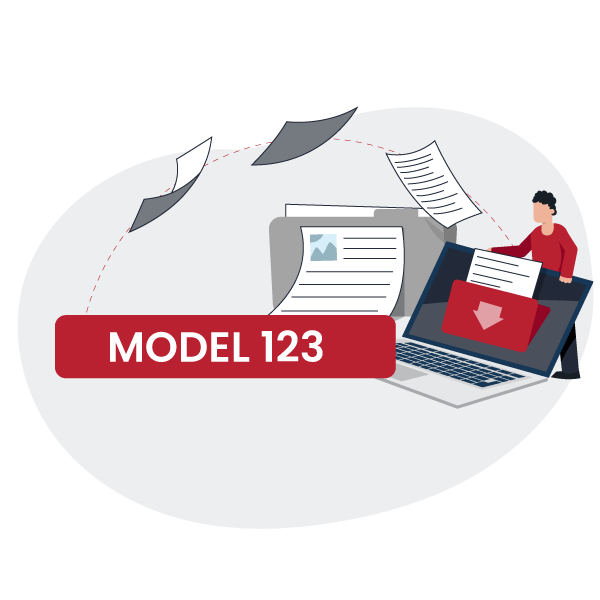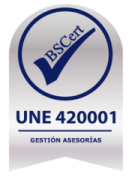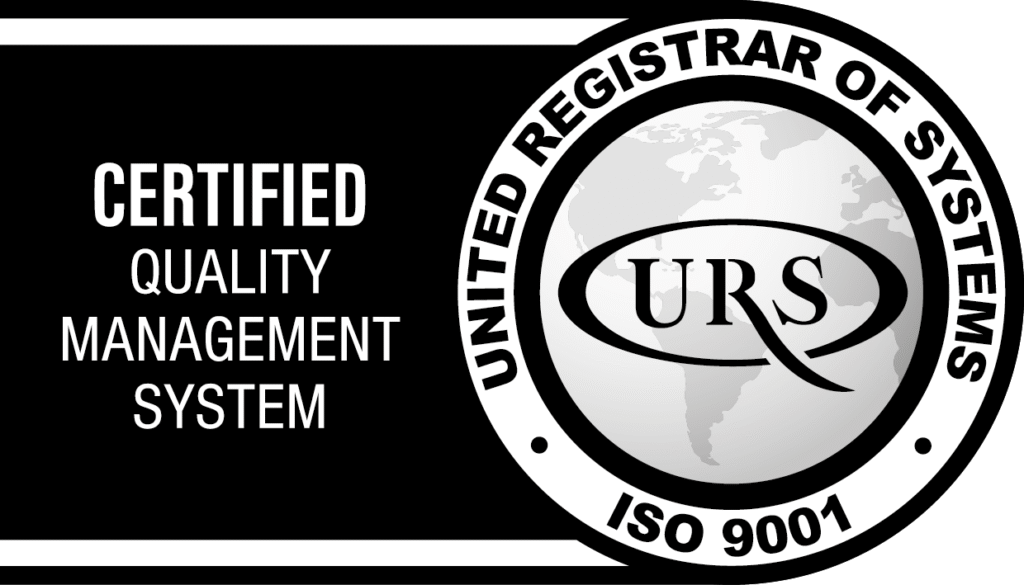Whether you’re an entrepreneur, a freelancer, or a limited company manager, keeping up with your tax obligations is essential. Among the most common is the submission of Model 111 to the State Tax Administration Agency (AEAT).
This model is one of the most relevant and necessary documents you must submit to the Tax Agency.
In the following lines, we explain everything essential about Model 111: who is obliged to submit it, the established deadlines, and the possible fines for non-compliance.
If you need support to manage this obligation, we recommend contacting your tax advisor or firm to avoid penalties and ensure everything is done correctly.
What is Model 111?
Model 111 is a form used to declare amounts withheld corresponding to Personal Income Tax (IRPF).
This document collects the withholdings and payments on account that have been applied during the year to employees, professionals, or business owners, and it is generally submitted quarterly, although in some cases it can be monthly.
The withholdings reflected in this model include income from work, economic activities, prizes, and certain capital gains.
The main purpose of Model 111 is to inform the State Tax Administration Agency (AEAT) about the withholdings made, making it a fundamental document within business accounting.
It’s important to remember that the amounts withheld in payments made to third parties (whether employees or professionals) do not belong to the one withholding them, but to the beneficiary of the payment. Therefore, these withholdings must be paid to the Tax Agency on behalf of the recipient and declared in Model 111. This figure functions as an advance payment of the taxpayer’s income tax and must be correctly reported to comply with current tax obligations.
Who Must Submit Model 111?
Model 111 is intended for those who make payments subject to Personal Income Tax (IRPF) withholdings, such as salaries, economic activities, prizes, and certain capital gains or income imputations. It’s worth noting that payments for rentals to individuals are declared using another form, Model 115.
This obligation includes both freelancers and companies that have employees on payroll or hire professionals. It’s important to understand that the tax falls on your employees or collaborators, and you act as an intermediary with the Tax Agency to make these withholdings.
When is Model 111 Submitted?
The submission of Model 111 is quarterly and must be done within the first 20 days of the month following the corresponding quarter. The established periods each year are:
- First quarter: April 1st to 20th
- Second quarter: July 1st to 20th
- Third quarter: October 1st to 20th
- Fourth quarter: January 1st to 20th
However, there is an exception for companies with an annual turnover exceeding €6,010,121.04, which must submit this model monthly, always within the first 20 days of the month following the corresponding settlement.
In the case of direct debit, the submission period is shorter, from the 1st to the 15th of each month.
What is the Purpose of Model 111?
Model 111 functions as a tax control mechanism that allows the Tax Agency to ensure that employees, freelancers, and other professionals make advance payments of their income tax. This advance payment is made indirectly through those who make the payments—that is, the payer (such as a company)—who has the responsibility to withhold and declare these amounts, rather than the taxpayer themselves.
What Happens if Model 111 is Submitted Late?
Submitting Model 111 late can lead to penalties and surcharges that vary depending on the circumstances. It’s not the same if you detect the error yourself and correct it before the Tax Agency acts, or if the Tax Agency formally requests it from you.
If you submit the model yourself after the deadline, surcharges will be applied to the amount to be paid according to the time elapsed:
- 5% surcharge if the delay is less than 3 months
- 10% if the delay is between 3 and 6 months
- 15% if the delay is between 6 and 12 months
- 20% if the delay exceeds 12 months
If the Tax Agency detects the lack of submission and issues a request, the situation is considered an infraction, and the penalties will be higher, depending on the severity:
- Minor infraction: 50% of the unpaid amount
- Serious infraction: 100% of the unpaid amount
- Very serious infraction: 150% of the unpaid amount
Is it Possible to Postpone Model 111?
While it would be useful to be able to postpone the submission of Model 111, this procedure does not allow for postponements, as documents related to IRPF withholdings must be submitted within the established deadlines.
However, in exceptional cases, it is possible to request a postponement or payment in installments. To do this, a justified request must be submitted through the official channels of the State Tax Administration Agency (AEAT).
This procedure is usually complex and requires careful management. At DAEM, as a tax advisory firm, we have experts who can advise you on how to carry out this procedure correctly and avoid penalties or surcharges for delays.
Don’t hesitate to contact us to receive the necessary guidance and comply with your tax obligations without inconvenience.
What is Model 190 and How is it Related to Model 111?
Model 190 is an annual summary that collects all IRPF withholdings and payments on account made during the year. This form complements Model 111, as it compiles all the information from the quarterly declarations submitted via Model 111, also detailing the specific data of each recipient.
Unlike Model 111, Model 190 does not involve making any payment to the Tax Agency, as it is only a consolidated report. For this reason, it is fundamental that the amounts declared in both models match and that they are submitted within the established deadlines, to avoid inspections or requests that could financially affect the company.
To understand its relevance, the Tax Agency uses the information from Model 190 to prepare the draft income tax return for employees and collaborators.
Important Notice
At DAEM, we are committed to providing accurate and updated information in our publications. However, due to the complexity and possible changes in tax regulations, we recommend seeking advice from specialized professionals to correctly handle the particularities of each case. We do not assume responsibility for possible errors or omissions in the content presented.
